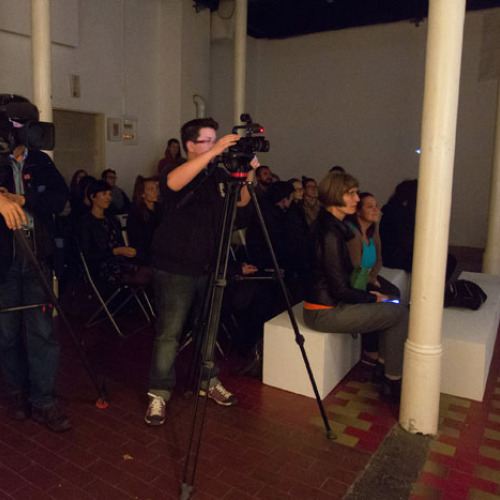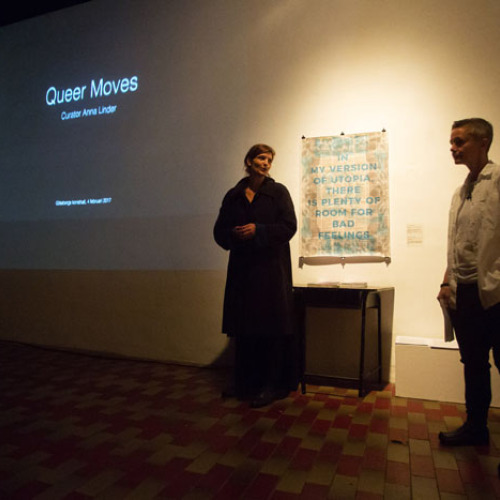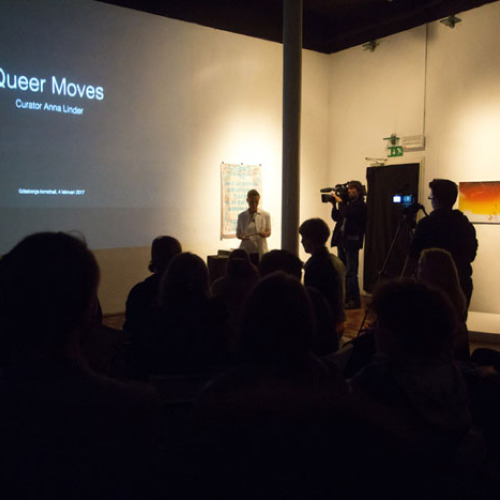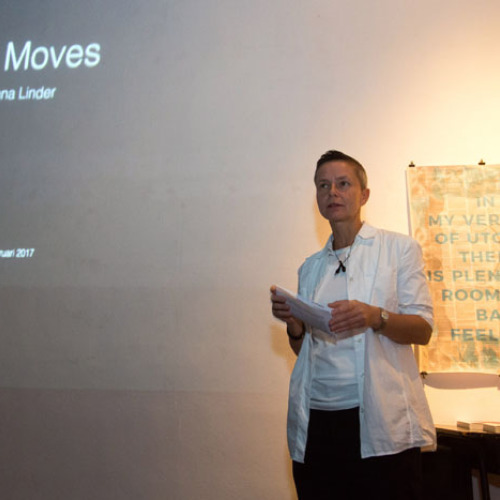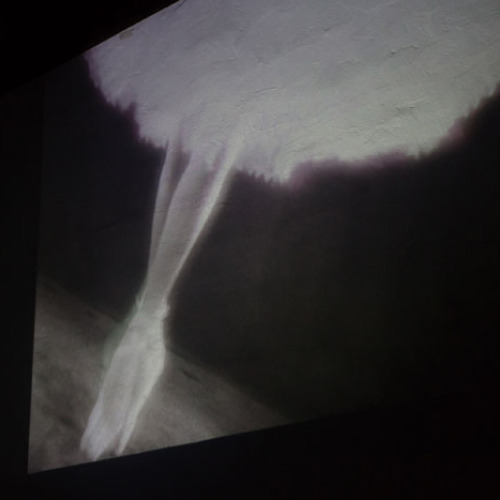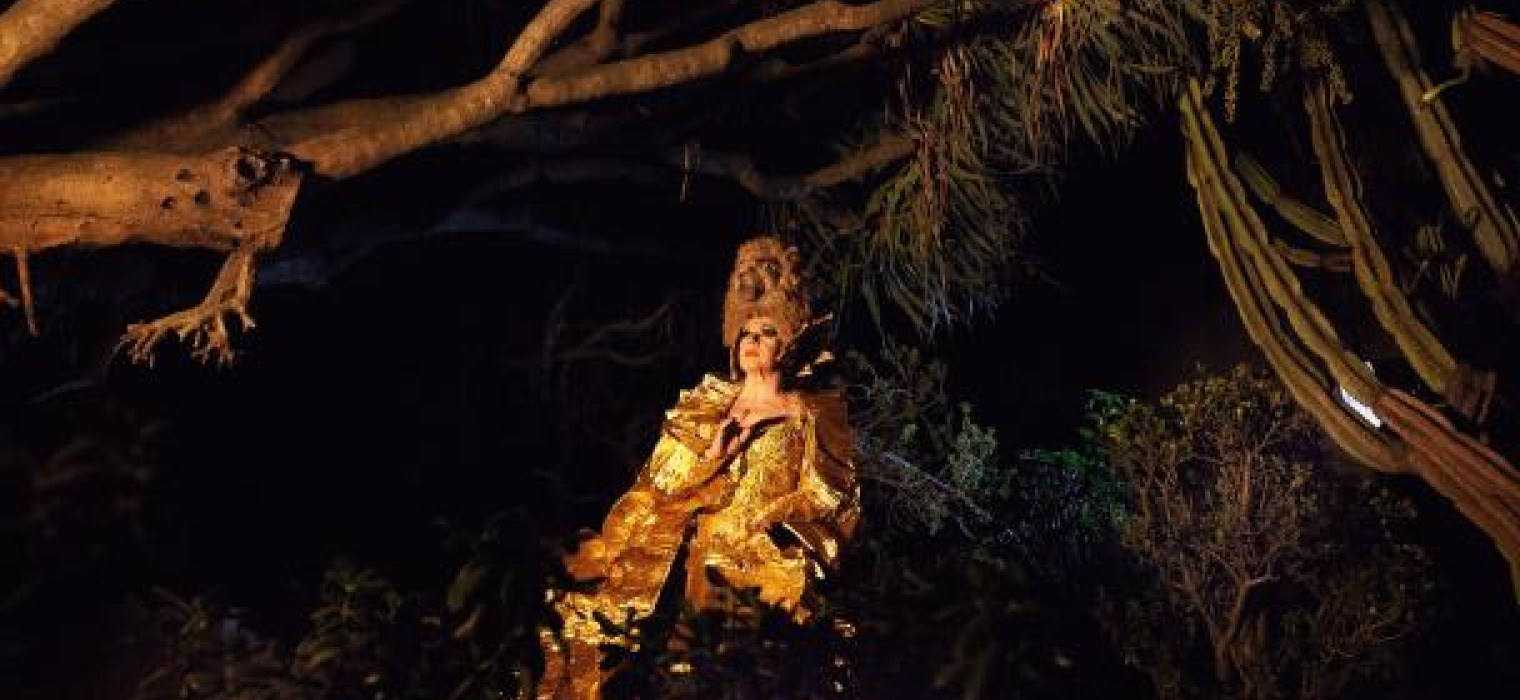
Queer Moves
Screening of Shorts / 60'
Selection: Anna Linder
Programme:
- Germaine Dulac: Themes of Variations, 1928
- Marcelle Thirache: S.............ELLE, 1990
-
Klara Lidén: Warm Up: Hermitage State Theatre, 2014
-
Maja Borg: MAN, 2016
-
Marie Losier: L ́Oiseau de la nuit, 2016
Anne Linder about the selection:
"In the case of moving images, movement and music are two things that interest me a lot. I have taken Germaine Dulac’s three experimental short films as my starting point in this programme, especially the newly restored Themes of Variations. The short films that Dulac made at the end of the 1920s should be shown without sound; the movements in the films are able to stand alone. In Themes of Variations, she cross clips between fragility and hardness. Always with an incredibly sensual gaze, where the lighting, movement and dance lead us further into what she called ‘a visual symphony’. Inspired by dancers like Loïe Fuller and Isadora Duncan, Dulac liberated her films from the figurative and created several abstract and surrealist films. Dulac was the pioneer of personal films during her era, and she viewed cinematography as a social tool, with life and truth being its most self-evident ingredients. Dulac, the activist, as a lesbian feminist experimental filmmaker. Fighting, at that time, for her own independent creative space makes her one of the most radical and exciting personalities in the history of film. Dulac on her abstract films: “With variations of diagonal movements, slow-motion, overlayings and blurrings, abstraction is created, and, in combination with the rhythm, a suggestive perspective which stretches beyond the form is attained.”
Klara Lidén often relates to movement and music in their videos. In contrast to Dulac’s visual experiments, their videos are simple and straightforward in their form; however, both Lidén and Dulac utilise fixed camera positions, where the movement takes place in front of the lens. In Warm Up, it is the ballet dancers’ movements that fascinate Lidén, and, like so many times before, the artist puts themselves into the vulnerable position in front of the camera. During a warm up at the St. Petersburg State Ballet, they do their best to follow the ballerinas’ movements. When Lidén sent me the film, accompanied by the desire for an understanding of its queerness and the longing for affinity, it felt clear that Warm Up should be connected to Dulac’s early experiments, which also use dancers’ movements as their point of reference.
Identity and the changing queer body during pregnancy is something that Maja Borg’s film MAN is quite alone in showcasing. Here, Borg plays with the clichés of gay icons and typical male roles, shining a new light on the image of the pregnant body. From Lidén’s experiments involving their own body movements to Borg’s departure from stereotypes, we travel onwards to a lesbian romantic relationship that is on the verge of ending in Marcelle Thirache’s unknown film S………….ELLE. Thirache is a painter to begin with, and was inspired to make films after seeing the works of Germaine Dulac and Marguerite Duras. Thirache is a very established experimental filmmaker, hand-painted film art and nature being her hallmarks. S………….ELLE is directly related to Borg’s film MAN, a hand-processed Super 8 film focusing on the female body and featuring time-lapse recordings and inked filmstrips. Thirache invites us into an erotic game with stills, or as she puts it herself: “I was very in love with the person, but the relationship was heading towards its end and I wanted to explain my relationship to the female body. I wanted to show eroticism without showing sexual relations. It was so much more poetic to me.” The film has only been shown in lesbian contexts in France, and in Anna Linder’s film programme for Göteborgs Konsthall.
Connecting the installation of Spermwhore with Queer Moves has been important, and further links get tied together with the last film, by Marie Losier, L´Oiseau de la nuit. Losier’s film, filled with colourful costume orgies of textile materials and associated tools like scissors and buttons, fits, of course, well with my own textile references in Spermwhore. Losier depicts a world of mysticism, creatures and animals, but above all an artistic portrait of the performance artist Fernando, aka Deborah Krystal. The film closes with dance and happiness, taking us further into the night."
(translated from Swedish by Alex Alvina Chamberland)
Tickets: €7 / €5
In frame of the project Performing Gender - Dance makes differences.
Organization: City of Women. In cooperation with Alkatraz Gallery.
Supported by The Swedish Arts Council.



